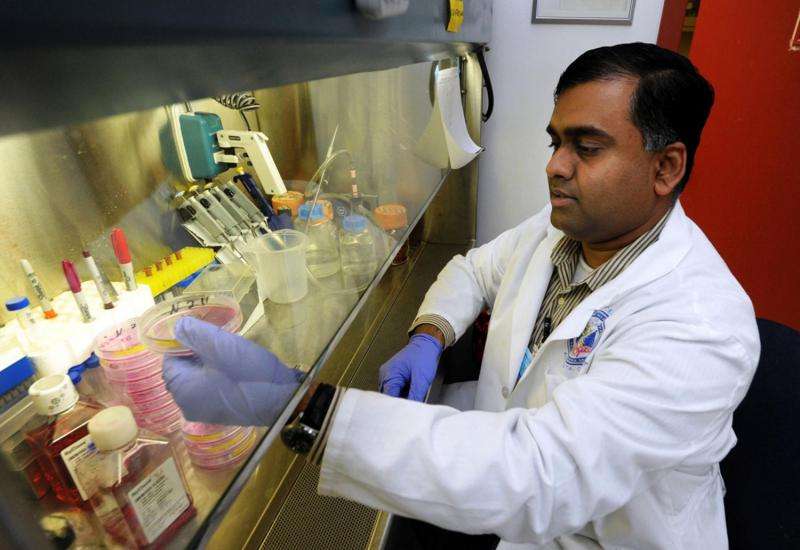Researchers find potential treatment for fatal lung diseases

Researchers at the University of Georgia have discovered that the drug triciribine may reverse or halt the progression of pulmonary fibrosis and pulmonary hypertension, two respiratory diseases that are almost invariably fatal. They published their findings recently in the British Journal of Pharmacology.
Pulmonary fibrosis occurs when lung tissue becomes scarred, leading to loss of lung function and reduced oxygen supply to the blood. Pulmonary hypertension involves an increase of blood pressure in the arteries of the lung that can lead to heart failure.
Although no definitive cause for the disease has been identified, pulmonary fibrosis affects nearly 130,000 people in the U.S., with about 48,000 new cases diagnosed annually, according to the Coalition for Pulmonary Fibrosis. Pulmonary hypertension is rare—with only about 15 to 50 cases per million people—but the total number of deaths attributed to the disease increased by more than 40 percent in the U.S. between 1980 and 2002, according to the Centers for Disease Control and Prevention.
"The average life expectancy for people with these diseases is only about five years after diagnosis, and while the drug treatments we currently have may help improve quality of life, they don't reduce mortality," said Somanath Shenoy, co-author of the paper and associate professor in UGA's College of Pharmacy. "Our tests show that treatment with triciribine can halt disease progression and may even reverse some of the damage to lung tissue."
The researchers used mouse models that mimic the disease characteristics of pulmonary hypertension and pulmonary fibrosis in humans to study the effect of triciribine, which inhibits production of a protein called Akt1.
Previous research has demonstrated that Akt1 is at least partly responsible for the development of myofibroblasts, cells that migrate to the sites of injury to aid in wound healing. When these cells become unregulated, they create scarring, which leads to fibrosis and loss of functional blood vessels in the lungs.
Researchers waited until mice began to exhibit symptoms of disease and then injected the mice with triciribine once daily for a period of three weeks. The characteristic scarring and loss of lung vasculature was slowed in every mouse, and the lung tissue of some mice began to return to normal.
"To our knowledge, this is the first direct evidence that Akt1 causes disease onset and progression of pulmonary fibrosis and pulmonary hypertension," Shenoy said. "We have also tested this process in human cells taken from diseased lung tissue, and we see very similar results."
The researchers tested their hypothesis further by examining genetically modified mice that do not possess the Akt1 pathway. None of these mice developed disease symptoms, further implicating Akt1 as the primary cause of disease.
The researchers are quick to point out that these results are preliminary, and that more tests are necessary before they can evaluate triciribine's efficacy in humans. However, a human version of triciribine could be administered orally, eliminating the need for daily injections.
"We still need to identify the downstream effects of Akt1 inhibition to see if there are any negative side effects," Shenoy said. "But if these tests go well, we hope to begin human trials within the next three to five years."
More information: British Journal of Pharmacology, onlinelibrary.wiley.com/doi/10 … 1/bph.13203/abstract
















